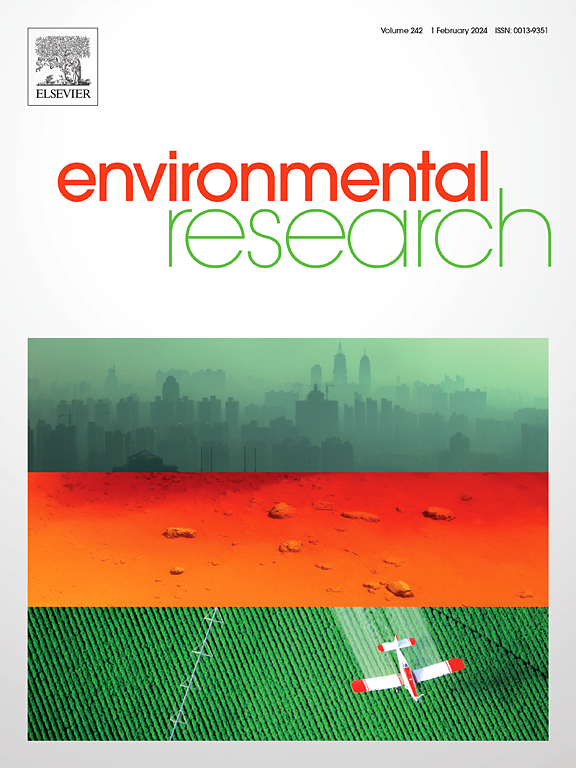暴露于BTBPE的柔韧臂尾虫生活史性状、种群动态和子代大小的响应
IF 7.7
2区 环境科学与生态学
Q1 ENVIRONMENTAL SCIENCES
引用次数: 0
摘要
新型溴化阻燃剂1,2 -双(2,4,6三溴苯氧基)乙烷(BTBPE)自20世纪70年代中期以来得到广泛应用,并在水生环境和生物中检测到;然而,关于其生物毒性的信息很少。研究了BTBPE(0、0.01、1和100 μg/L)对轮虫生活史参数、转录组调控、多代子代大小和种群动态的影响。结果表明:BTBPE (1 μg/L)显著延长轮虫的预繁殖期,缩短轮虫的繁殖周期和寿命,降低轮虫的子代总数;转录组学分析显示,参与柠檬酸循环、2-氧羧酸代谢、碳代谢和丙酸代谢通路的关键基因表达受到影响。此外,BTBPE对轮虫具有跨代效应,F1 ~ F5代对BTBPE的响应显著减小。最后,与对照组相比,100 μg/L BTBPE处理组的轮虫种群密度显著降低30%,表明BTBPE暴露抑制了轮虫种群的生长。本研究结果表明,BTBPE对轮虫的个体繁殖、种群生长、后代质量和能量代谢均有影响。这些发现强调了BTBPE对优势浮游动物物种的潜在影响,为评估新型溴化阻燃剂的潜在生态风险提供了有用的基线信息。本文章由计算机程序翻译,如有差异,请以英文原文为准。
Response of life-history traits, population dynamics, offspring size of Brachionus plicatilis exposure to BTBPE
The novel brominated flame retardant 1, 2-bis (2,4,6 tribromophenoxy) ethane (BTBPE) has been widely used since the mid-1970s and detected in the aquatic environment and organisms; however, little information is available regarding its biotoxicity. In this study, the life-history parameters, transcriptomic regulation, multi-generational offspring size, and population dynamics of rotifers were determined in response to BTBPE (0, 0.01, 1, and 100 μg/L). The results showed that BTBPE (>1 μg/L) significantly increased the pre-reproductive time, shortened both reproduction periods and the lifespan, and decreased the total number of rotifer offspring. Transcriptomic analysis revealed that the expression of key genes involved in the pathways of citrate cycle, 2-oxocarboxylic acid metabolism, carbon metabolism, and propanoate metabolism was affected. Moreover, BTBPE has transgenerational effects on rotifers, the size of the F1 to F5 generations decreased significantly in response to BTBPE. Finally, the population density in the 100 μg/L BTBPE treatment group was significantly reduced by 30 % compared to the control group, suggesting that the population growth of rotifers was inhibited by BTBPE exposure. The findings of this study indicate that BTBPE has effects on the individual reproduction, population growth, offspring quality, and energy metabolism of rotifers. These findings highlighted the potential impacts of BTBPE on dominant zooplankton species, providing useful baseline information for evaluating the potential ecological risk of novel brominated flame retardant.
求助全文
通过发布文献求助,成功后即可免费获取论文全文。
去求助
来源期刊

Environmental Research
环境科学-公共卫生、环境卫生与职业卫生
CiteScore
12.60
自引率
8.40%
发文量
2480
审稿时长
4.7 months
期刊介绍:
The Environmental Research journal presents a broad range of interdisciplinary research, focused on addressing worldwide environmental concerns and featuring innovative findings. Our publication strives to explore relevant anthropogenic issues across various environmental sectors, showcasing practical applications in real-life settings.
 求助内容:
求助内容: 应助结果提醒方式:
应助结果提醒方式:


